
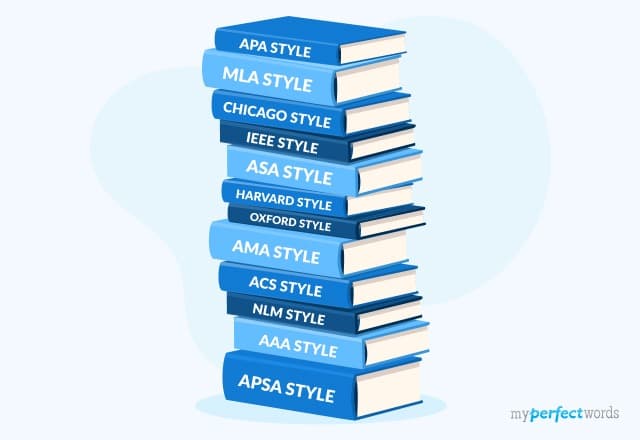
It is easy for students to get lost in the process of referencing and citations.
Academic writing can be complex as It requires more than just great ideas and a well-structured paper. It also demands a keen understanding of citation styles.
These styles are the backbone of academic writing, ensuring that knowledge is properly credited and ideas are built upon a solid foundation. Proper citation not only helps avoid plagiarism but also adds to the credibility of the text.
In this blog post, we'll not only explore the different citation styles but also discuss their importance and the differences that distinguish them.
So, let’s dive right in!
On This Page![]()
- 1. What are Citation Styles
- 2. How Many Citation Styles Are There?
- 3. How to Find the Right Citation Style for Your Paper?
- 4. Different Types of Citations
- 5. Creating Citations According to Different Citation Styles
- 6. Quick Tips for Citations
What are Citation Styles
A citation style, at its core, is a structured set of rules and guidelines that dictate how sources should be cited in academic and research papers.
It is like a map for writers. It helps them give credit to other authors, show where their ideas came from, and make it easy for readers to find the sources.
Here is why students should cite their essays and assignments:
Purpose of Using Citations:
Citations in academic writing are crucial for honesty, clear communication, and allowing readers to verify information sources. They are the foundation of academic integrity.
Consequences of Not Using Citations:
Not including citations in your paper can result in plagiarism. It is a serious academic offense with consequences like damaging your reputation, academic penalties, and potential expulsion.
Proper citations not only prevent plagiarism but also establish your research as credible and reliable.
How Many Citation Styles Are There?
Depending on the field of study and academic preferences, there are numerous citation styles available.
Here are some of the most commonly used citation styles and their specific characteristics:
- American Psychological Association (APA): The APA style is widely used in the social sciences, particularly in psychology. It emphasizes clarity and precision in writing.
- Modern Language Association (MLA): MLA style is prevalent in the humanities, including literature and language studies. It focuses on detailed in-text citations and has specific guidelines for formatting papers.
- The Chicago Manual of Style: This style is used in a range of disciplines, particularly history. It provides both notes and bibliography citation styles, allowing for flexibility in citing sources.
- Institute of Electrical and Electronics Engineers (IEEE): IEEE is commonly used in engineering and technical fields. It utilizes a numerical system for in-text citations and has specific guidelines for citing various types of sources.
- American Sociological Association (ASA): The ASA style is used in sociology and related fields. It follows a format similar to APA but with some variations in the title page and reference list formatting.
- Harvard Citation Style: Widely used in the fields of economics and humanities, Harvard style features in-text citations with the author's last name and publication year, along with a corresponding reference list.
- Oxford Style Citation (OSCOLO): This style is common in legal studies. It uses footnotes for citations and has a detailed reference list at the end of the document.
- AMA Style (American Medical Association): Common in the medical field, AMA uses a numerical system in superscript for in-text citations and provides specific guidelines for citing medical sources.
- ACS Style (American Chemical Society): Used in chemistry, ACS style offers three different methods of citation, including the use of superscript numbers in the text.
- NLM Style (National Library of Medicine): The NLM style is employed in medical and healthcare research. It offers flexibility in citation format, depending on the source type.
- AAA Style (American Anthropological Association): This style is used in anthropology and follows similar rules to the Chicago style with some distinctions in formatting.
- APSA Style (American Political Science Association): The APSA style is designed for political science research and combines elements of the Chicago style with unique guidelines for citations and references.
How to Find the Right Citation Style for Your Paper?
Selecting the right citation style for your paper is a critical decision that significantly impacts how your work is perceived and evaluated.
You should consider the following factors when choosing the citation style for your research:
Field of Study:
Different academic disciplines have their preferred citation styles. For instance, APA is commonly used for social sciences, while MLA is prevalent in literature.
Academic Requirements:
Ensure you follow the specific citation style requirements set by your institution, professor, or publication to which you are submitting your work.
These factors can also help maintain consistency and credibility in your writing.
Let’s take a look at the table below to help you determine the citation style according to your academic discipline:
Academic Discipline | Standard Citation Style(s) |
Humanities | |
Literature | MLA, Chicago |
History | Chicago, APA, MLA |
Philosophy | MLA, Chicago, APA |
Art and Art History | Chicago, MLA |
Social Sciences | |
Psychology | APA, Chicago |
Sociology | ASA, APA, Chicago |
Political Science | APSA, Chicago |
Economics | APA, Chicago |
Natural Sciences | |
Biology | CSE, APA |
Chemistry | ACS, APA |
Physics | APS, APA |
Earth Sciences | APA |
Engineering | |
Mechanical | IEEE |
Civil | IEEE |
Computer Science | IEEE, APA |
Health Sciences | |
Medicine | AMA, APA |
Nursing | APA, AMA |
Public Health | AMA, APA |
Business | |
Management | APA, Chicago |
Marketing | APA, Chicago |
Finance | APA, Chicago |
Different Types of Citations
Citation styles have specific rules for paper formatting, references, in-text citations, appendices, and list entries.
There are also distinct in-text citation methods:
- Parenthetical Citations: These are in-text citations within brackets, including the author's last name, and publication year. In other terms, these are the author-date in-text citation methods; (Frank, 2013)
- Note In-Text Citation: In this method, sources go in footnotes or endnotes, common in endnote citation styles. Readers can find the sources in these notes.
- Numeric In-Text Citation: This style uses numbers for all sources in the reference section, which are then used for in-text citations.
Remember, each citation style has its unique in-text citation and reference list format. Understanding them is crucial when working with different styles.
Creating Citations According to Different Citation Styles
Let’s dive into different citation styles and see what requirements they have that you need to keep in mind while creating your references!
American Psychological Association (APA)
The APA citation style is widely recognized and preferred by researchers and students alike. Its clarity and precision make it a top choice, especially in fields of social sciences.
However, it's important to note that the APA style has evolved, with notable differences between the 6th and 7th editions.
Here is a table to help you understand the difference:
Aspect | APA 6th Edition | APA 7th Edition |
Title Page | Includes the title of the paper, author's name, institutional affiliation, and author note. | Similar but more simplified. Includes the title of the paper, author's name, and institutional affiliation, eliminating the author's note. |
Header | Every page should have a header featuring a concise essay title. | No change remains consistent in both editions. |
In-Text Citations | In-text citations include the author's last name and the publication year (e.g., Williams, 2014). | Introduces a simplified approach. In most cases, it uses the author's last name and the publication year, eliminating the need for a specific page number. |
Reference Entry | The reference entry should include the author's last name, the initials of their first name, the publication year, the title of the work, and the source. | No significant change remains largely consistent between the 6th and 7th editions. |
Let’s take a look at the examples to help you have a better understanding of this citation style:
APA 6th Edition In-text Citation: (Johnson, 2015) Johnson, M. L. (2015). The impact of climate change on biodiversity. Environmental Science Journal, 25(3), 345-359. APA 7th Edition In-text Citation: (Johnson, 2015) Citation: |
Modern Language Association (MLA)
The MLA citation style differs from APA and is prevalent in fields like art, literature, and linguistics.
Key MLA citation style features include:
- MLA-style papers do not include a separate title page. Student and paper details, such as the student's name, teacher's name, and paper deadline, are typically added as a running header on each page.
- Intext citations contain the author's last name and the page number or paragraph number from which the quotation is sourced (e.g., Arthur 22).
- References are documented under 'Works Cited' and are organized alphabetically.
- Reference entries adhere to the "last name first" structure, featuring the author's last name, followed by the page number and publisher.
MLA style is often viewed as more straightforward than other citation styles, as it eliminates the need for a separate title page.
Here is an example of a citation of a journal in MLA format:
In-text Citation: (Johnson 347) Citation: Johnson, Mary L. "The Impact of Climate Change on Biodiversity." Environmental Science Journal, vol. 25, no. 3, 2015, pp. 345-359. |
The Chicago Manual of Style
The Chicago citation style is primarily used in the field of history. It encompasses both Chicago and Turabian citation styles, with slight distinctions.
Key aspects of Chicago and Turabian citation styles include:
- Both styles offer two methods for incorporating intext references: as footnotes or within parentheses.
- Footnotes are indicated by superscript numbers preceding the quoted text, followed by explanatory notes at the bottom of the page.
- Parenthetical in-text citations include the author's last name, publication year, and page number.
This citation style is known for its precision and is predominantly employed in historical subjects.
Here is an example of citations in the Chicago Manual of Style (CMS) for a journal article:
In-text Citation: (Johnson 2015, 347) Citation: Johnson, Mary L. 2015. "The Impact of Climate Change on Biodiversity." Environmental Science Journal 25, no. 3: 345-359. |
Institute of Electrical and Electronics Engineers (IEEE)
The IEEE citation style is specialized for technical and engineering fields. It prioritizes brevity and numerical citations.
Important considerations for IEEE citation are:
- The reference list is organized numerically, instead of alphabetically.
- Instead of author names and publication years, numerical references are enclosed in brackets preceding the citation.
- Reference entries contain author initials, publication year, paper title, and web links, if applicable.
Let’s take a look at the following example of IEEE citation style;
In-text Citation: [1] Citation: [1] M. L. Johnson, "The Impact of Climate Change on Biodiversity," Environmental Science Journal, vol. 25, no. 3, pp. 345-359, 2015. |
American Sociological Association (ASA)
The ASA citation style is commonly used in sociology. It shares certain similarities with APA, especially in terms of title page formatting.
Key components of ASA citation include:
- The title page features the student's full name, institution, and address.
- Intext citations include the author's last name and the publication year.
- Reference lists follow a structured format.
The ASA style, while somewhat resembling APA, features specific differences that should be carefully observed.
Here is an example of a journal citation in ASA format for a journal article:
In-text Citation: (Johnson 2015) Citation: Johnson, Mary L. 2015. "The Impact of Climate Change on Biodiversity." Environmental Science Journal 25(3): 345-359. |
Harvard Citation Style
Harvard citation style is unofficial but widely used by students of economics and humanities. It bears similarities to APA but includes minor variations.
Key guidelines for Harvard citation comprise:
- The title page should contain the student's full name, teacher's name, subject, and paper deadline.
- Intext citations include the author's last name and publication year.
- Reference entries feature the author's last name, first name initials, publication year, title of the cited work, publisher, and page numbers.
Although Harvard's citation style resembles APA, students should pay attention to the nuances that set them apart.
Let’s take a look at the citation of a journal article in Harvard Style;
In-text Citation: (Johnson 2015) Citation: Johnson, M. L. (2015). "The Impact of Climate Change on Biodiversity." Environmental Science Journal, 25(3), 345-359. |
Oxford Style Citation
Oxford citation style, also known as OSCOLO, (the Oxford University Standard for the Citation of Legal Authorities), is primarily intended for law students but can be applied in other disciplines. This documentary note style incorporates footnotes.
Important elements of Oxford style citation include:
- It consists of two components: footnotes added at the bottom of each page and a reference page listing used works.
- Footnotes are indicated by superscript numbers paired with the relevant word or phrase.
- It is crucial to ensure all works used in the paper are listed in the references.
Oxford style citation varies from other styles, necessitating strict adherence to its established guidelines.
Here is an example of a journal article in Oxford citation style;
In-text Citation (Footnote) Mary L. Johnson, "The Impact of Climate Change on Biodiversity," Environmental Science Journal 25, no. 3 (2015): 345. Citation: Johnson, Mary L. "The Impact of Climate Change on Biodiversity." Environmental Science Journal 25, no. 3 (2015): 345-359. |
AMA Style (American Medical Association)
AMA style is specifically employed in the medical field. It employs a numerical citation system and is used to format publications and articles in medical journals.
Key elements of the AMA style include:
- Font style and size must adhere to Times New Roman and 12 pt.
- The addition of a separate title page is optional; student and paper details can be included as a header.
- Instead of author names and publication years, superscript numbers are inserted with cited facts or phrases.
- Superscript numbers guide readers to complete citations listed in the reference section.
AMA style is reminiscent of the IEEE style, both employing numerical systems for citations and references.
Get a better insight into the AMA style by looking at the following example of a journal article:
In-text Citation: (Johnson 2015) Citation: Johnson ML. The Impact of Climate Change on Biodiversity. Environmental Science Journal. 2015;25(3):345-359. doi:10.12345/example-doi |
ACS Style (American Chemical Society)
The ACS style caters to chemistry students, emphasizing precision and clarity.
Notable elements of ACS citation style encompass:
- Designed exclusively for the field of chemistry, it is intended for chemistry students and researchers.
- This style offers three distinct citation formats: superscript numbers, numbers in italics within parentheses, and author surnames with publication years.
The citation structure adheres to the specific demands of chemistry research. ACS style, tailored to the chemistry field, is flexible in citation pattern selection.
Here's a journal article citation in the American Chemical Society (ACS) style:
In ACS, in-text citations typically use numbers enclosed in square brackets: In-text Citation: [1] Citation: Johnson, M. L. The Impact of Climate Change on Biodiversity. Environmental Science Journal 2015, 25, 345-359. |
NLM Style (National Library of Medicine)
The NLM style is versatile, offering three citation formats for various source types.
Key aspects of NLM citation style are:
- The citation format varies according to source types such as books, journals, articles, and web pages.
- Citations include author names, publication years, article/book titles, and URLs where applicable.
NLM style is commonly employed for citing sources in medical journals and publications.
Let’s take a look at how to cite the same journal article in NLM style:
In-text Citation: (Johnson 2015) Citation: Johnson ML. The Impact of Climate Change on Biodiversity. Environmental Science Journal. 2015;25(3):345-359. |
AAA Style (American Anthropological Association)
The AAA style targets anthropology students. It draws inspiration from the Chicago Manual of Style but diverges in certain aspects.
Vital components of the AAA style include:
- Titles of books, journals, and articles are neither italicized nor underlined but are presented in a straightforward format.
- Author names include the last name followed by the full first name, without initials.
- The references section may employ different spacing, being double-spaced for student works and single-spaced for works intended for journal publication.
The AAA style distinguishes itself from the Chicago style, particularly in treating main titles.
Here's how to cite a journal article in AAA style:
In-text Citation: (Johnson 2015:347) Citation: |
APSA Style (American Political Science Association)
The APSA style is specifically designed to be used by students and researchers of the political science field.
Key features of this style encompass:
- APSA style employs in-text citations, including the author's last name, publication year in parentheses, and, when necessary, page numbers for pinpointing specific information sources.
- Author names are presented in full, encompassing both first and last names, in references and citations.
- Book and journal titles are italicized when cited in the text, adhering to academic writing conventions.
- The reference list is arranged alphabetically under the heading 'References,' ensuring an organized and easily accessible compilation of all cited sources.
Comprehending these details for each citation style empowers students and researchers to effectively apply the appropriate style to their academic and research work.
Citation styles play a pivotal role in ensuring the integrity and clarity of scholarly work.
Let’s take a look at how to cite a journal in APSA style:
In-text Citation: (Johnson 2015) Citation: Johnson, Mary L. 2015. "The Impact of Climate Change on Biodiversity." Environmental Science Journal 25(3):345-359. |
Quick Tips for Citations
Here are some helpful tips for writing citations:
- Paraphrase Properly: When you paraphrase a source, reword the content in your own words but still cite the source to give credit.
- Double-check: Review your citations and reference list for accuracy and completeness. Make sure all elements are in the right format.
- Seek Help: If you're unsure about a specific source or how to cite it, consult your style guide or ask your instructor for guidance.
- Check for Plagiarism: Use plagiarism detection software or online tools to verify that your citations and references are correctly formatted and cited.
- Understand Digital Sources: Learn how to cite digital sources, such as online articles, e-books, and websites. Include URLs or DOI numbers when applicable.
- Keep a Record: Keep a record of your sources as you research, noting all necessary citation information (author, title, publication date, page numbers, etc.).
- Plan Ahead: Start early on your citations, especially for longer papers or projects. It's easier to manage your sources as you go along.
So, there you have it!
In this detailed guide on different citation styles, we've learned their vital role in academic writing, explored various styles, and grasped how to pick the right one.
Understanding different citation styles can be difficult for some students. In that case, the better option is to look for a custom paper writing service.
A professional paper writer can write an assignment for you according to your specified requirements and formats.
MyPerfectWords.com is the best writing service that helps students get their papers and essays at affordable prices.
Just tell us to 'do my paper for me' and we'll get the job done professionally within time!
If you are looking for citation and referencing help, then place an order for your academic paper now!
Frequently Asked Questions
What are the two types of citations used in APA Style?
There are two types of in-text citations used within the body of an APA paper to help your reader locate the corresponding reference list. Parenthetical citation is a brief note at the end or beginning of a sentence that cites source information, whereas narrative cite provides more detail about what was referenced.
What type of citation uses numbers?
IEEE citation style includes in-text citations, which refer to the full citation listed at the end of a paper. The reference list is organized numerically and not alphabetically.

Write Essay Within 60 Seconds!
Use our AI tool to generate high quality essayWRITTEN BY
Alexander P.
My academic training emphasized rigorous case analysis, theoretical frameworks, and development of sophisticated arguments. I approach each project with the analytical standards expected at top-tier institutions.
Keep reading
MLA Formatting Simplified - Rules for Page Formatting, Citations, & References
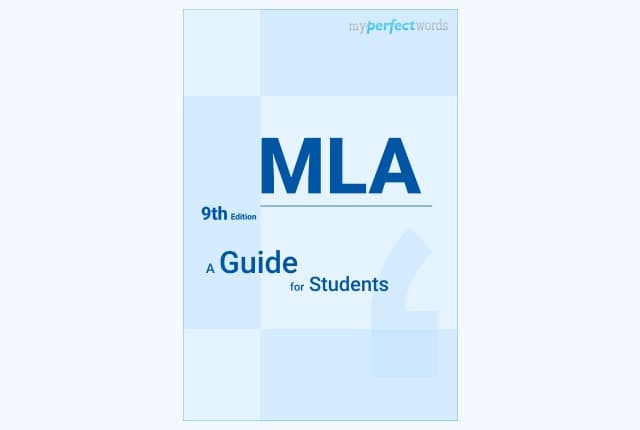
Understanding the APA Format: A Complete Guide with Examples
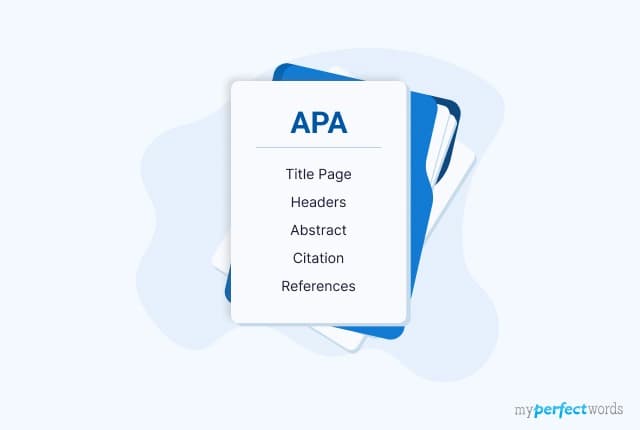
APA vs MLA | The Key Differences and Similarities
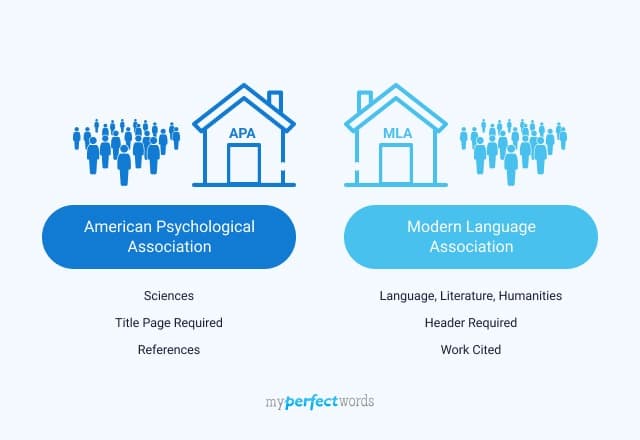
How to Cite in Chicago Style - Examples and Tips

Learn IEEE Citation and Formatting With This Simple Guide
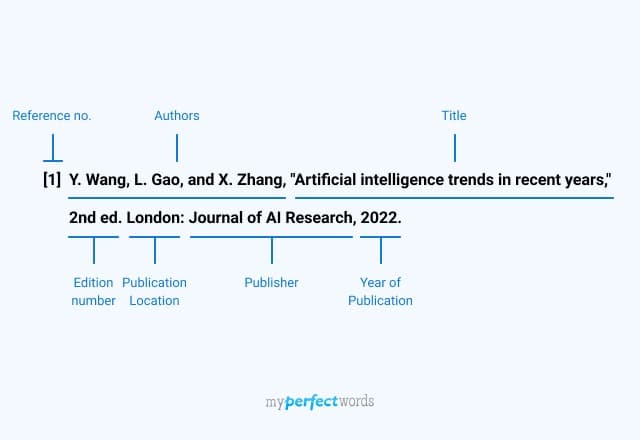
Mastering ASA Format: Guide to Proper Academic Writing

How to do Harvard Style Citation - Format, Citation and Samples
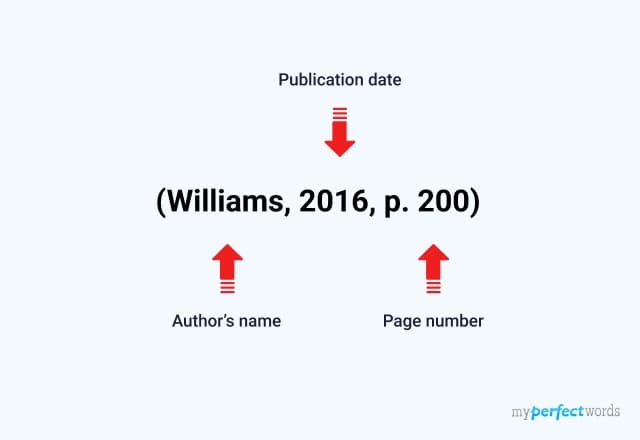
How to Cite in AMA Style - Formatting & Examples

A Detailed ACS Citation Manual for Scientific Papers

How to Master NLM Citation: A Detailed Guide With Tips

A Complete AAA Citation Guide with Examples

Simple APSA Citation and Formatting Guide for Students
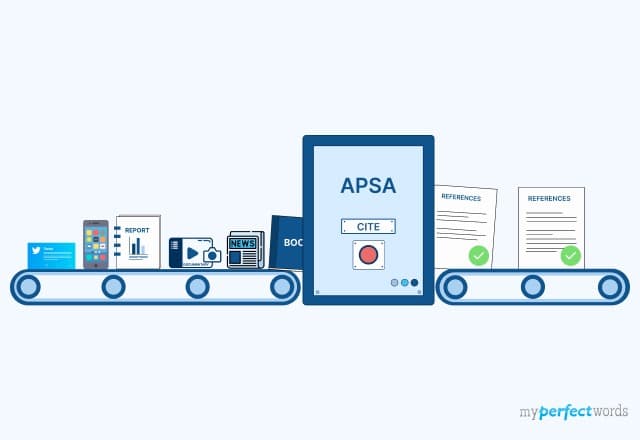
How to Cite in Oxford Referencing Style - Complete Guide
